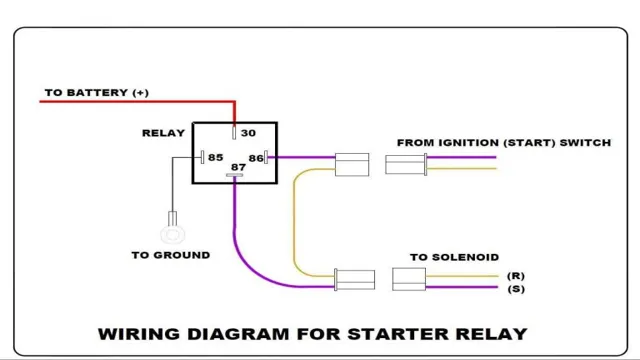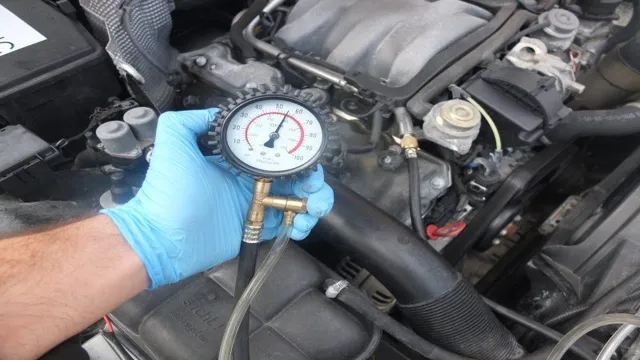Squelch the Squeak: A Comprehensive Guide on How to Fix Squeaky Leaf Springs
Do you hear a squeaking noise every time you hit a bump while driving? Does it seem to be coming from your leaf springs? If so, you’re not alone. Squeaky leaf springs can be a frustrating and even dangerous problem for car owners. Not only do they indicate potential damage to your vehicle, but they can also be downright annoying to listen to.
Fortunately, there are several ways to fix squeaky leaf springs and get your car back to its smooth, quiet ride. In this article, we’ll explore some of the most effective techniques for silencing those noisy leaf springs and restoring your peace of mind on the road.
Identify the Problem
Leaf spring squeaks are a common issue that many vehicle owners face. If you’ve noticed an irritating squeaking sound coming from your car’s suspension system, chances are high that your leaf springs need lubrication. The leaf springs are an essential component of your vehicle’s suspension system, and they help in supporting the weight of the vehicle.
Therefore, it’s crucial to fix squeaky leaf springs to avoid the chances of any damage to your car. One way to tackle the problem is by following the steps below. First, locate the squeaky leaf spring by listening and bouncing each corner of the vehicle.
Next, remove the spring from the vehicle and inspect it for any visible damage. Finally, apply a layer of lubricant to each joint and reinstall the spring. By carrying out these simple steps, you can reduce or eliminate the squeaking sound and ensure a smoother ride.
Remember to perform regular maintenance on your vehicle’s suspension system to prevent such issues from recurring.
Listen for Squeaks
When it comes to identifying problems with your vehicle, one simple trick is to listen for squeaks. Those high-pitched noises could indicate a variety of issues, from worn out brakes to loose belts. Pay attention to which specific areas of your car the squeaks are coming from, as this can help pinpoint the problem.
For example, if you hear squeaks when you turn the steering wheel, it could be an issue with the power steering system. If you hear squeaks while braking, it may be time for new brake pads. By listening closely and identifying the source of the squeaking, you can catch problems early on and take care of them before they worsen.
Don’t ignore those annoying squeaks – they could be a sign of a much bigger problem.

Check for Worn Bushings
One of the common problems that car owners can encounter is worn bushings. Worn bushings can impact the handling and stability of your vehicle, which can lead to an increase in safety risks on the road. The best way to identify worn bushings is to listen carefully for any unusual noises coming from under the car, such as clunking or squeaking.
You may also notice a decrease in steering responsiveness or a shaky steering wheel. Another sign to look for is uneven tire wear. You can inspect the bushings visually to see if they appear worn or damaged.
If you suspect that you have worn bushings, it’s important to have them replaced as soon as possible to ensure the safety and stability of your vehicle. Regular inspections and maintenance can help prevent this issue from occurring. Remember, if your vehicle is not handling as it should, it’s always better to err on the side of caution and have it checked out by a professional auto technician.
Tools You Need
If you’re wondering how to fix squeaky leaf springs, you’ll be pleased to know that this is a fairly simple task that doesn’t require much expertise. The first thing you’ll need are the necessary tools, which include a wrench, lubricant spray, and possibly a pry bar. Once you have these, you can begin the process of fixing your squeaky leaf springs by first locating the source of the noise.
This is typically caused by a lack of lubrication in the springs or bushings, so your next step will involve spraying the lubricant spray onto the affected areas. Be sure to apply it generously so that it can penetrate deep into the springs and bushings. If the noise persists after this step, you may need to use the pry bar to adjust the tension in the springs.
With a bit of patience and persistence, you should be able to get your leaf springs working smoothly once again.
Wrenches and Sockets
Wrenches and sockets are essential tools for any DIY enthusiast or professional mechanic. Wrenches come in various sizes and types, including crescent, ratcheting, box-end, and open-end wrenches. Each type serves a different purpose, and having a set of wrenches with multiple sizes is a must.
Sockets, on the other hand, fit onto wrenches and allow for easier and quicker bolt and nut removal. Socket sets come in both metric and standard sizes, and just like wrenches, having a range of sizes is crucial. It’s also important to have quality tools that are made of durable materials to ensure longevity and reliability.
Investing in the right tools not only makes repairs and maintenance tasks easier but also saves time and money in the long run.
Jack and Stands
When it comes to working on your car, having the right tools can make all the difference. If you’re planning to do any work underneath your vehicle, you’ll definitely need a set of jack stands. These tools are designed to hold the weight of your car safely and securely, allowing you to work on it without any risk of it falling down on you.
There are different types of jack stands available, but the most common are tripod stands and ratcheting stands. Tripod stands have three legs and are great for uneven surfaces, while ratcheting stands are adjustable and can be set to the exact height you need. You’ll also need a good quality floor jack to lift your car up so you can position the jack stands.
When choosing your tools, make sure to consider the weight of your car and the height you’ll need to get it to. It’s always better to have a set of jack stands that are a little too heavy-duty than not strong enough, as your safety is a top priority.
Fix the Problem
If you have noticed that your leaf springs are producing annoying squeaking sounds, you may be wondering how to fix the issue. The good news is that you can easily fix the problem with a few simple steps. The first step is to locate the source of the noise by inspecting the leaf springs thoroughly.
Once you have identified the problem area, it is time to clean it using a wire brush or sandpaper. This will help remove any rust or debris that may be causing the squeaking sounds. Next, apply lubricant to the affected areas such as lithium grease or WD-40.
Finally, test your vehicle to ensure that the problem has been fixed. Regular maintenance of your leaf springs can help prevent this issue from happening again in the future. With these simple steps, you can enjoy a smooth, quiet ride free from annoying squeaks.
Remove Leaf Springs
If you’re experiencing issues with your leaf springs, removing them can be a solution to fix the problem. Leaf springs are essential components of the suspension system. They offer support to the weight of your vehicle and absorb shocks from the road.
However, factors like overloading, rough terrain, and corrosion can cause damage to the leaf springs resulting in reduced vehicle performance. Removing the damaged leaf springs and replacing them with new ones is a practical way to fix the problem. It’s important to note that removing leaf springs can be challenging, especially if you lack the necessary tools and skills.
Additionally, it’s recommended to enlist the help of a professional mechanic to avoid damaging other components of the vehicle. By removing and replacing damaged leaf springs, you can maintain the performance and safety of your vehicle on the road.
Replace Worn Bushings
If you’ve noticed your vehicle making strange sounds, or if the handling feels off, it could be due to worn bushings. These small components, found in various parts of your car’s suspension system, are responsible for absorbing shocks and providing stability. Over time, they can wear down, resulting in increased noise, vibration, and even compromised safety.
Fortunately, replacing worn bushings is a relatively straightforward fix. Depending on the location of the worn bushing, you may be able to handle the repair yourself, or you might need to take your car to a mechanic. Either way, it’s important to address the issue as soon as possible to avoid further damage and ensure your car is performing at its best.
Don’t ignore those strange noises- get your bushings checked today to stay safe on the road.
Add Lubricant
If you’re facing a problem with a squeaky or stiff mechanism, it may be time to consider adding lubricant. Lubrication is essential to keep mechanical parts moving smoothly, and it can help prevent problems from developing down the road. Common areas that require lubrication include door hinges, bike chains, and engine components.
When adding lubricant, it’s important to use the proper amount and type of lubricant to avoid over-lubricating, which can attract dust and debris and cause more problems. It’s also recommended to clean the area prior to adding lubricant to ensure the best results. By following these steps, you’ll be able to fix the problem and keep your mechanism running smoothly for years to come.
Prevent Future Squeaks
Are you tired of your leaf springs squeaking every time you hit a bump in the road? The good news is that fixing this problem isn’t as complicated as you might think. Start by determining the cause of the squeak – it could be due to friction between the leaves, worn-out bushings, or loose U-bolts. Once you’ve identified the issue, you can take steps to resolve it.
Applying a lubricant to the leaves can reduce friction and eliminate the noise. Swapping out old bushings for new ones can also prevent squeaks from occurring in the future. And tightening or replacing loose U-bolts can make a significant difference as well.
By following these simple steps, you can fix your squeaky leaf springs and enjoy a smoother, quieter ride.
Regular Maintenance
Regular maintenance is key to preventing future squeaks in your machinery. As a machine owner, it is essential to make sure that you are performing routine maintenance checks and addressing any issues before they become major problems. This will help to keep your machinery running smoothly and quietly for longer periods of time.
Some examples of regular maintenance checks include inspecting oil levels, tightening loose bolts and screws, replacing worn-out parts, and cleaning away any debris that may have accumulated over time. By taking the time to perform these simple maintenance tasks, you can prevent future squeaks and avoid costly repairs in the long run. Remember, a little bit of preventative maintenance can go a long way in ensuring the lifespan and smooth functioning of your valuable machinery.
So stay on top of things and keep those squeaks at bay!
Use High-Quality Parts
Using high-quality parts is an essential step to prevent future squeaks in your vehicle. Cheap and low-quality components may save you some money upfront, but they will probably cause you more headaches in the long run. Investing in good parts like brakes, tires or suspension components will not only improve the overall performance of your vehicle, but it will also reduce the likelihood of squeaks and other unwanted noises.
In fact, squeaks are often an indicator that some of the parts in your car are worn out, damaged, or improperly installed. Therefore, it’s important to use quality parts and have them installed by a professional mechanic to ensure your vehicle runs smoothly and quietly for years to come. Remember, in the end, you get what you pay for!
Conclusion
In the end, fixing squeaky leaf springs comes down to three key ingredients: patience, elbow grease, and a bit of know-how. With a little TLC and some careful attention to detail, you can get those springs purring like a kitten once again. So if you’re tired of hearing that annoying creak every time you hit a bump in the road, roll up your sleeves, grab your tools, and get to work.
Your fellow drivers will thank you for it!”
FAQs
How do I know if my leaf springs are squeaking?
Look for signs of wear and tear, such as cracks or missing pieces, and listen for a squeaking sound when driving over bumps.
Can I fix squeaky leaf springs myself?
It is possible to fix squeaky leaf springs yourself, but it is recommended to have a professional do it for optimal safety and to ensure the job is done right.
What causes leaf springs to squeak?
Leaf springs can squeak due to wear and tear, lack of lubrication, or moisture buildup.
What are the benefits of fixing squeaky leaf springs?
Fixing squeaky leaf springs can improve the overall ride quality, stability, and safety of the vehicle, as well as prevent further damage to other components of the suspension system.







